Multiple Sclerosis (MS) is a complicated and often unpredictable condition that affects the brain and spinal cord, disrupting the communication between the central nervous system and the rest of the body.
This can lead to a wide range of symptoms and challenges, making daily life difficult for many people. Although there is no cure for MS, various treatments called disease-modifying therapies can help reduce the activity of the disease and slow its progression.
Additionally, many therapies, including medications and non-medical options, can help manage symptoms and improve mobility and overall quality of life.
One of these therapies is Hyperbaric Oxygen Therapy (HBOT). This treatment involves breathing 100% pure oxygen under higher-than-normal pressure. Oxygen is an essential part of the body’s healing process, as it helps reduce inflammation and repair damaged tissues.
This blog is a good read for those wanting to learn more about Multiple Sclerosis for Hyperbaric Oxygen Therapy.
What is Multiple Sclerosis?
A 2019 study funded by the National MS Society found that around 1 million people in the United States have been diagnosed with multiple sclerosis (MS). This is more than double the number estimated in earlier studies. On a global scale, MS organizations estimate that approximately 2.3 million people are living with this condition.
Multiple sclerosis is an autoimmune disease that affects the central nervous system, which includes the brain and spinal cord. In people with MS, the immune system, which is supposed to protect the body, mistakenly attacks myelin.
Myelin is the protective layer that covers the nerves in the brain and spinal cord. When this layer is damaged, it disrupts the signals that nerves send across the body, leading to problems with important functions like vision, movement, and sensation.
Key Types of Multiple Sclerosis Explained
Multiple Sclerosis (MS) can be divided into four main types, each based on how the disease progresses and affects the body. These types are:
Relapsing-Remitting MS (RRMS)
This is the most common form of MS, with 85% of patients being diagnosed with it. RRMS is defined by distinct episodes of symptoms called relapses or exacerbations. Each relapse is followed by a period of recovery, known as remission. During remission, symptoms might completely go away or some may stay and become permanent until the next relapse occurs.
Secondary-Progressive MS (SPMS)
SPMS starts out like RRMS, with cycles of relapses and remissions. However, over time, symptoms gradually worsen, and neurological function declines. Around 60 to 70% of people with RRMS eventually transition to SPMS.
Primary-Progressive MS (PPMS)
PPMS involves a steady decline in neurological function from the beginning of the disease, without any relapses or remissions. Only about 15% of MS patients have this type.
Progressive-Relapsing MS (PRMS)
This is a rare form of MS, affecting just 5% of patients. PRMS is characterized by a steady worsening of symptoms along with occasional relapses. Unlike in RRMS, the symptoms from these relapses do not fully go away, although the disease may pause in its progression temporarily.
Each type of MS behaves differently, and understanding these variations can help patients and doctors work together to better manage the condition.
Recognizing Multiple Sclerosis Symptoms
The symptoms of Multiple Sclerosis (MS) can vary widely from person to person, depending on the location of the damaged nerve fibers. Common symptoms include:
- Numbness or weakness in the legs or torso
- Partial or complete vision loss
- Double vision
- Tingling sensations or nerve pain
- Lhermitte’s sign, a sensation similar to an electric shock that occurs with neck movement
- Muscle tremors
- Difficulty with coordination, dizziness, or an unsteady walk
- Speech difficulties
- Extreme fatigue
- Muscle stiffness or spasticity
- Issues with bladder or bowel control
- Changes in mood
These symptoms can range from mild to severe and may affect daily activities in different ways.
Improving Health with HBOT
Hyperbaric oxygen therapy is known to be a treatment of wounds in any location and of any Hyperbaric oxygen therapy (HBOT) is a promising treatment option for people with Multiple Sclerosis (MS). It helps heal damaged tissues, reduces symptoms, and stabilizes long-term function. Many patients also notice improvements in their overall health and wellness after undergoing HBOT.
HBOT has shown great benefits, especially for those with mild cases of MS, but people with severe symptoms have also experienced positive results. Patients often report better mobility, increased energy levels, and reduced symptoms such as urinary incontinence, involuntary movements, and fatigue.
While research on HBOT for MS is still limited, some important studies have been conducted. One of the most significant was a randomized controlled trial by Dr. Fischer, published in 1983 in a top medical journal. The study showed remarkable improvements in patients with relapsing-remitting MS who received HBOT.
A 14-year-long study in England found that intermittent HBOT treatments helped stabilize MS symptoms and even improve the condition of patients over time.
Our clinic’s experience with HBOT matches the findings from these studies. The 14-year study highlighted that HBOT works best for preventing symptom progression in people with MS. Long-term use of HBOT not only slows down neurological damage but also helps reduce physical symptoms, making it a highly promising treatment option.
As HBOT becomes more available, more patients are experiencing its long-term benefits. Stabilizing MS symptoms and preventing further progression are significant steps forward in managing this challenging condition, bringing hope to many patients.
How Can We Help?
At Lakeshore Hyperbaric Center, we’re here to support your healing. Our experienced team, safe practices, welcoming space, and dedication to patient care ensure you have a comfortable and positive experience at our Chicago center. Your well-being is our top priority.
Read More: HBOT for Delayed Radiation Injuries: A New Hope for Recovery
Read More: Oxygen Therapy in Stroke Patients: An Effective HBOT Treatment Strategy
Read More: Struggling with Non-Healing Foot Wounds? Discover How HBOT Can Help Diabetics!
Read More: HBOT Treatment for Long COVID: A Potential Solution for Recovery
Read More: The Role of HBOT in Speeding Up Stroke Recovery
Read More: Using Hyperbaric Oxygen Therapy to Treat Delayed Radiation Injuries
Read More: How HBOT for Viral Infections Helps in Recovery?
Read More: HBOT for Depression: The Impact of HBOT on Mental Health
Read More: HBOT for Cancer Patients: A Supportive Therapy for Cancer
Read More: Using HBOT for Autism Spectrum Disorder




